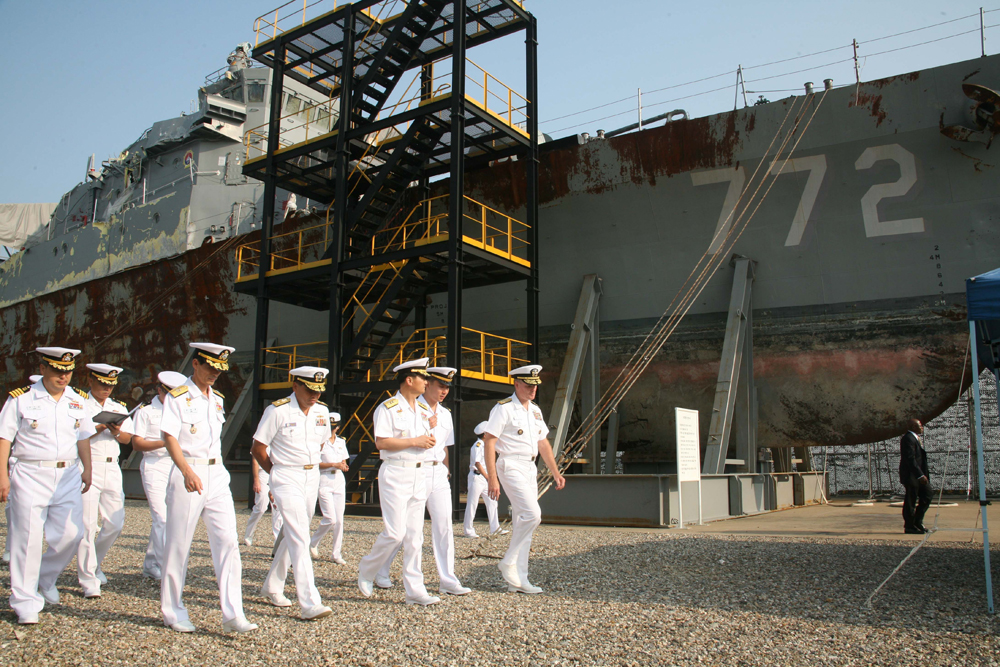In August, Kim Jong-un, North Korea’s head of state, and democratic party and army leader, threatened to bring war to South Korea, giving a 48-hour deadline for his demands to be met. As the end of that deadline ticked away at 5 p.m. on Friday, August 21, it was both frightening and anticlimactic. This event was not an isolated incident, but one of a continuous series of threats against South Korea.
According to a recent Associated Press report, disputes included weapon fire across the border, a torpedo strike which killed 46 sailors in 2010, North Korean military opening fire on South Korean protesters, and sending propaganda to the North in balloons.
“North and South Korea have been in a state of tension since the inconclusive ending of the Korean War in July 1953,’ said Charles Armstrong, a professor at Columbia University in New York and author of multiple books on the subject. “The war ended with a cease-fire or armistice, not a peace treaty or truce, meaning that in a strict legal sense the war never ended. The biggest concern we should have is that an incident will escalate out of control and lead to an all-out conflict, which could be devastating and even involve nuclear weapons,” said Armstrong.
The most recent standoff began when two South Korean soldiers were injured by a landmine in the Demilitarized Zone (DMZ), a four-kilometer-wide strip of land that separates the two countries. When North Korea would not claim responsibility for the injuries, South Korea began an anti-North propaganda campaign over loudspeakers across the DMZ.
According to Reuters, after round table talks and artillery fire from both sides, an agreement was met in which North Korea expressed regret for the landmines and South Korea ended the loudspeaker campaign.
“These provocations from the north, sometimes related to U.S./South Korean military cooperation such as joint military exercises, have been going on for a very long time. It’s really a fairly predictable cycle in which the North Koreans see U.S./South Korean cooperation as threatening, and then make counter threats, and sometimes carry those threats out in the form of military operations,” said Mel Gurtov, Professor Emeritus of Political Science at PSU and editor-in-chief of Asian Perspective, published both in South Korea and the US and sponsored in part by PSU.
But can the threats and violence which sometimes follows be felt within the PSU community?
According to a July report from the Office of International Student and Scholar Services at PSU, there were 72 Korean international students at PSU this past year. That number includes six exchange students and 66 on F-1 study abroad visas. It does not reflect Korean-American students, or those with friends and family in the Koreas. This number is expected to grow to close to 90 Korean international students by this fall term.
“Since most of my family lives in South Korea, I always worry they might be casualties if a nuclear war happened,” said Grace Kim, a PSU student who was visiting South Korea during the most recent tensions in August.
According to a September 15 report by BBC News, North Korea possesses enough weapons-grade plutonium for six bombs, but still lacks the ability to deliver it as a missile.
“I was a little frightened by another possible war rising between the two countries. But many tourists may have felt even more scared,” Kim continued.
But for many South Koreans, the threat of war with North Korea isn’t something to lose sleep over. Instead it’s just business as usual when their only land-connected neighbor gets angry.
“South Koreans in general are pretty much inured to these kinds of things, I mean they’ve lived with this for decades,” Gurtov said. “Although it’s not to be taken lightly, these situations are also susceptible to a positive ending, as with the decision by the two Koreas to resume family exchanges and visitations.”
With the resolution of the this most recent dispute, the two sides will hold a reunion in the DMZ for North and South Korean friends and family separated by the war more than sixty years ago.
“Behind that militant rhetoric is a certain realism, even on the part of people like, I’m sure, Kim Jong-un. The realism being that they fully understand where the balance of power lies. I mean, South Korea’s military, quite apart from the alliance from the United States, is far superior to that of North Korea…They’re not in a position to carry out attacks that would lead to a devastating counter attack and the end of the regime,” Gurtov said.
“There is always a chance for war, but that chance is very, very low,” said Yang Moo-jin, professor at the University of North Korean Studies in Seoul, quoted by Reuters.
Seoul, just 35 miles away from the North Korean border, would likely be the first target if North Korea decided to launch an attack. But for now, the good news is that both sides are cooperating with each other. The upcoming reunion of estranged North and South Koreans this October is a step in the right direction.






